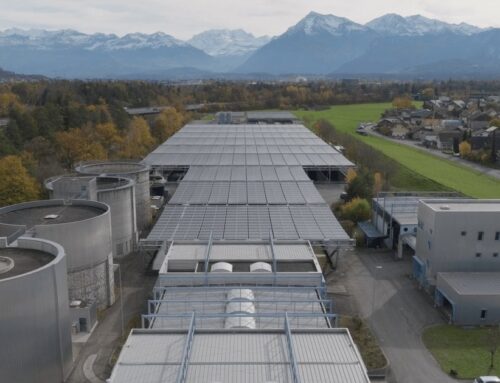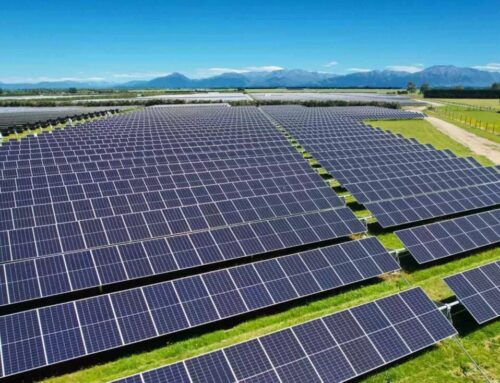Hyperscalers Crash the Grid as Big Tech Becomes a Power Trader
November 24, 2025
America’s hyperscalers are looking to ensure the electricity for their huge data centers by entering the supply side of the market—power trading.
Meta, Microsoft, and Apple, to name a few, have either requested or obtained authorizations from the Federal Energy Regulatory Commission (FERC) to sell wholesale power.
Meta Platforms, for example, seeks to incentivize long-term commitments in power-generating capacity by expanding into power trading and having the flexibility to contract electricity from future power plants, according to Urvi Parekh, Meta’s head of global energy.
Currently, power plant developers are careful about committing investments in the long term, which is not enough to meet the demand from AI and data centers.
Power capacity developers “want to know that the consumers of power are willing to put skin in the game,” Meta’s Parekh told Bloomberg in an interview last week.
“Without Meta taking a more active voice in the need to expand the amount of power that’s on the system, it’s not happening as quickly as we would like,” the executive added.
U.S. power utilities are investing a record amount of money into transmission and grid connection. But current forecasts of AI-driven power demand vary so much that there is a massive margin of error, analysts and utility officials told Reuters Events in June.
The U.S. market faces “a moment of peak uncertainty,” according to Rebecca Carroll, senior director of market analytics at energy advisor Trio.
Related: New Monster Gas Wells Are Outperforming Legacy Haynesville Deposits
Electric utilities face a high degree of uncertainty over future revenues as the boom of AI data centers generates widely varying forecasts of peak demand in many areas across the country.
If utilities overestimate their future demand, they risk overbuilding new capacity that will not be met by consumption. A possible overbuild would come at the expense of the American ratepayers, who have already seen electricity prices rising at a faster pace than U.S. inflation over the past three years.
The era of stagnated power demand in the United States ended about two years ago when hyperscalers started the race to develop AI-driven solutions and build huge data centers across the U.S.
America’s five largest hyperscalers are set to hike spending on data centers by 50% to over $300 billion in 2025, according to estimates by Wood Mackenzie.
U.S utilities have already committed to add 116 gigawatts (GW) of large load to their networks, equivalent to around 15% of U.S. peak electricity demand in 2024, the energy consultancy reckons.
The venture into power trading from hyperscalers could give utilities more certainty that their future new capacity will find customers.
“We’re seeing a breakdown between the demand and supply sides of the market, with the biggest actors playing on both sides,” WoodMac’s Ben Hertz-Shargel told Bloomberg.
“To better orchestrate growth, you need some of the largest buyers of electricity to actively support the buildout of the supply side.”
If Meta and other tech giants commit to long-term purchase agreements, power capacity developers will be more willing to invest in long-lead plant construction.
Meta alone is investing $600 billion in the U.S. by 2028 to support AI technology, infrastructure, and workforce expansion, the company said earlier this month.
The company says it’s making additional investments in energy supply and these have so far helped to add more than 15 GW of new energy projects to the grid across 27 states, representing more than $16 billion in capital investments.
It’s not only clean energy that will power the huge data centers of the hyperscalers—natural gas will play an important role, too.
For example, Meta’s new data center in Richland Parish in Louisiana, worth over $10 billion, will source electricity from three new gas-fired power plants after the Louisiana Public Service Commission this summer approved an agreement that paves the way for Entergy Louisiana to build these plants.
“Importantly, Meta is paying its share of the costs for the infrastructure needed to support its operations, ensuring that other customers are protected from those expenses,” Phillip May, Entergy Louisiana president and CEO, said in August.
By Tsvetana Paraskova for Oilprice.com
More Top Reads From Oilprice.com
- Gulf Coast Pipeline Boom Marks Largest Natural Gas Expansion Since 2008
- Solar EPC Market Set to Reach $1.2 Trillion by 2034
- Armenia Secures Key U.S. Approval for $500 Million AI Supercomputer Hub
Search
RECENT PRESS RELEASES
Related Post



